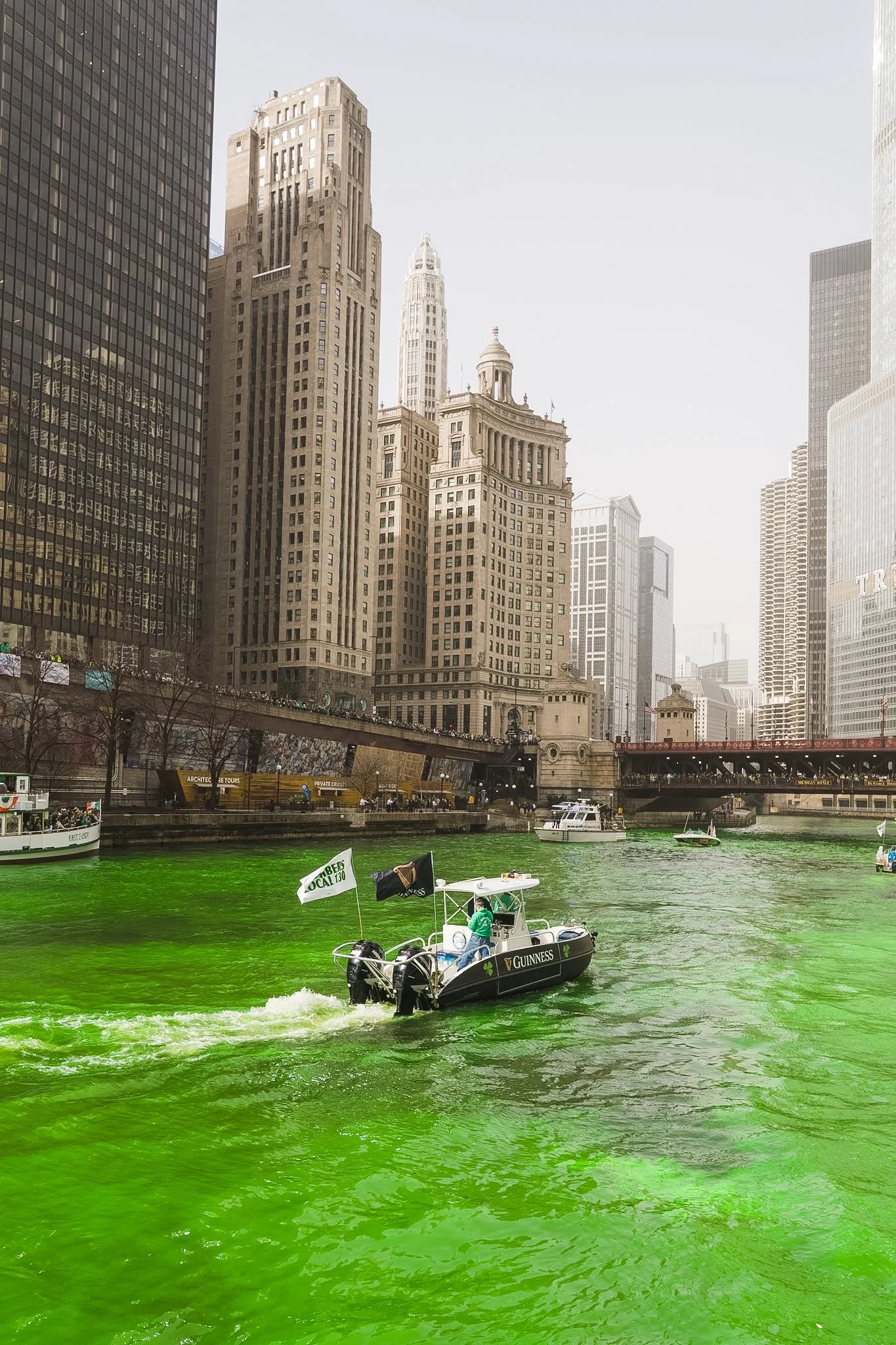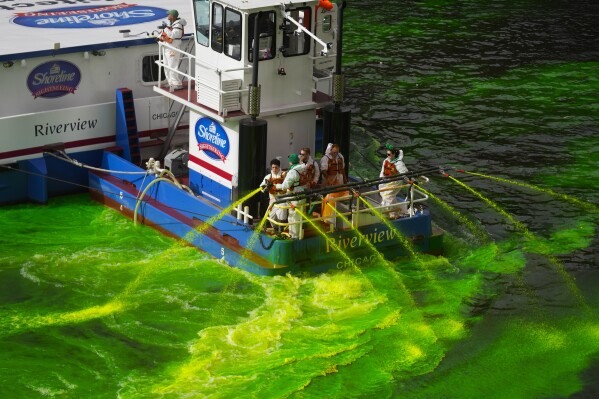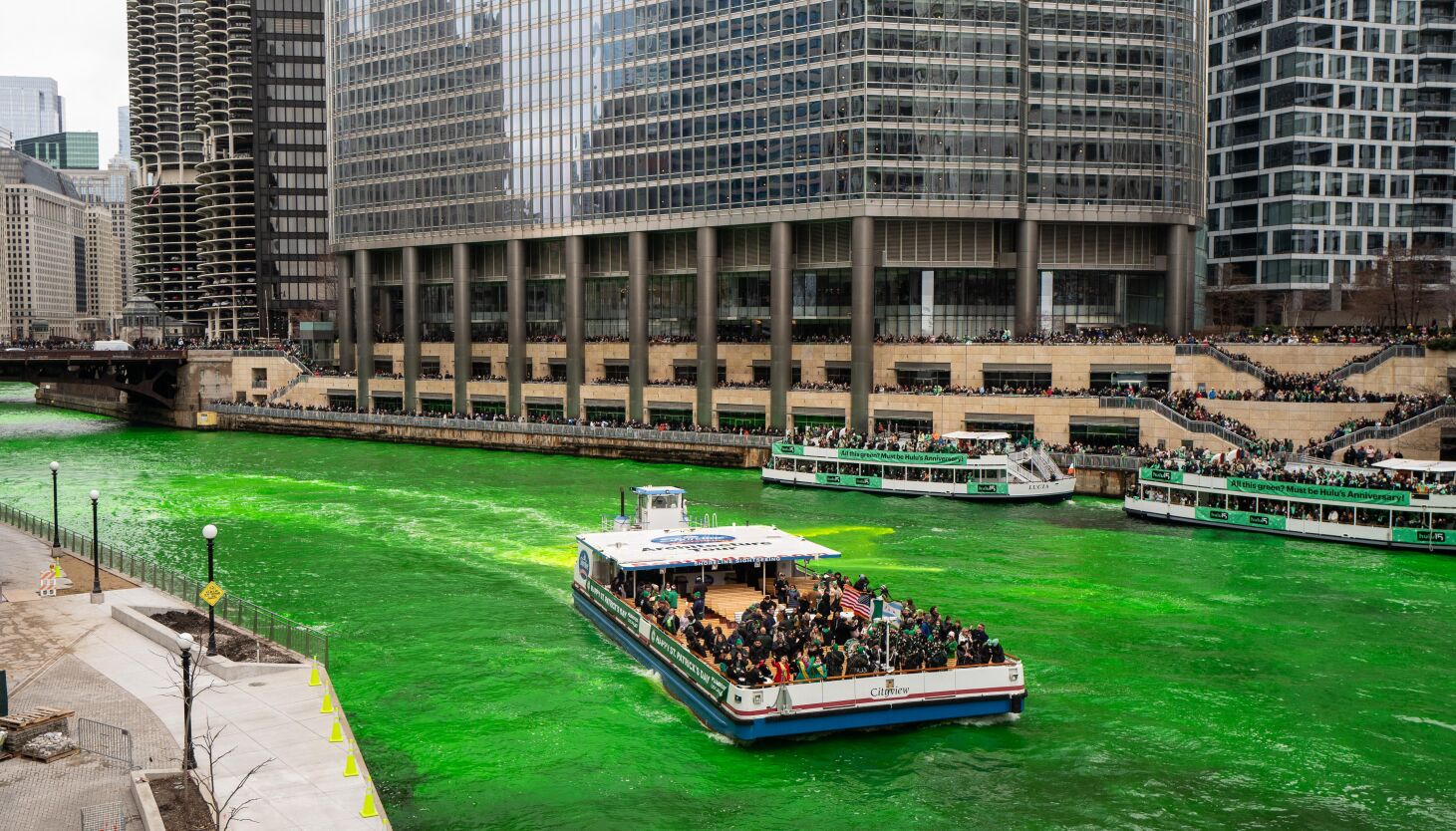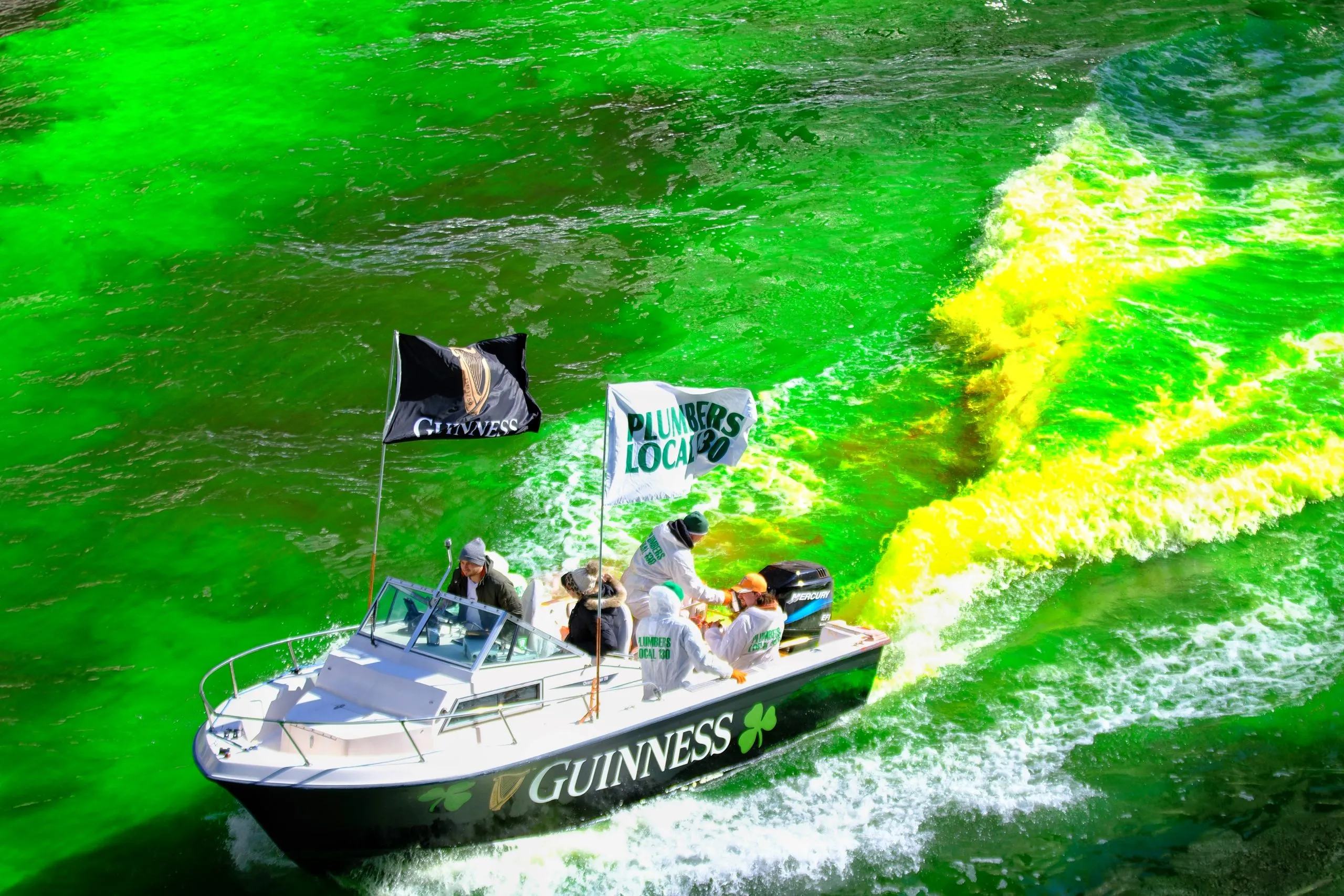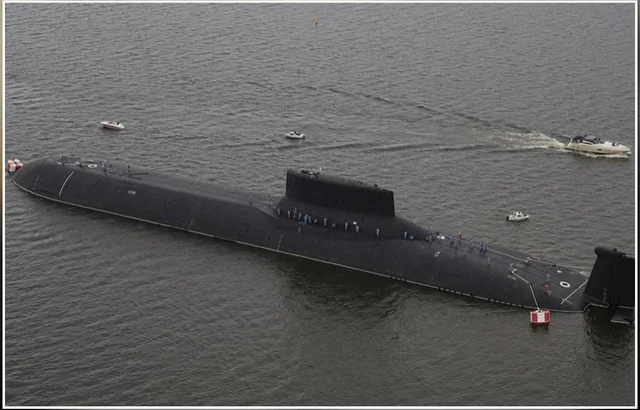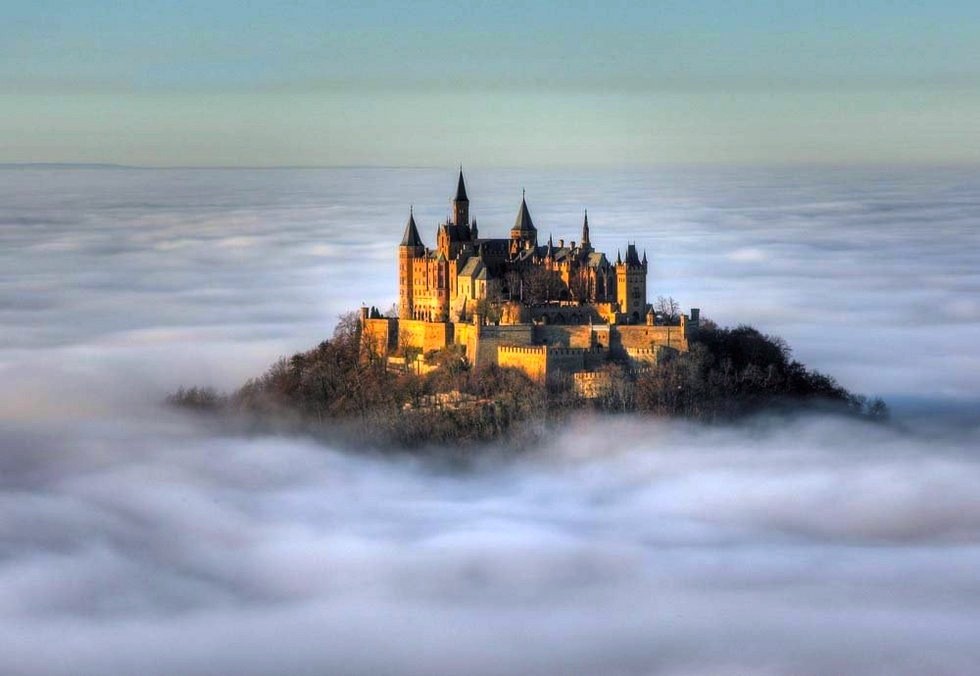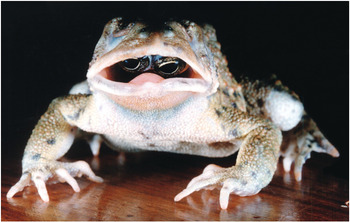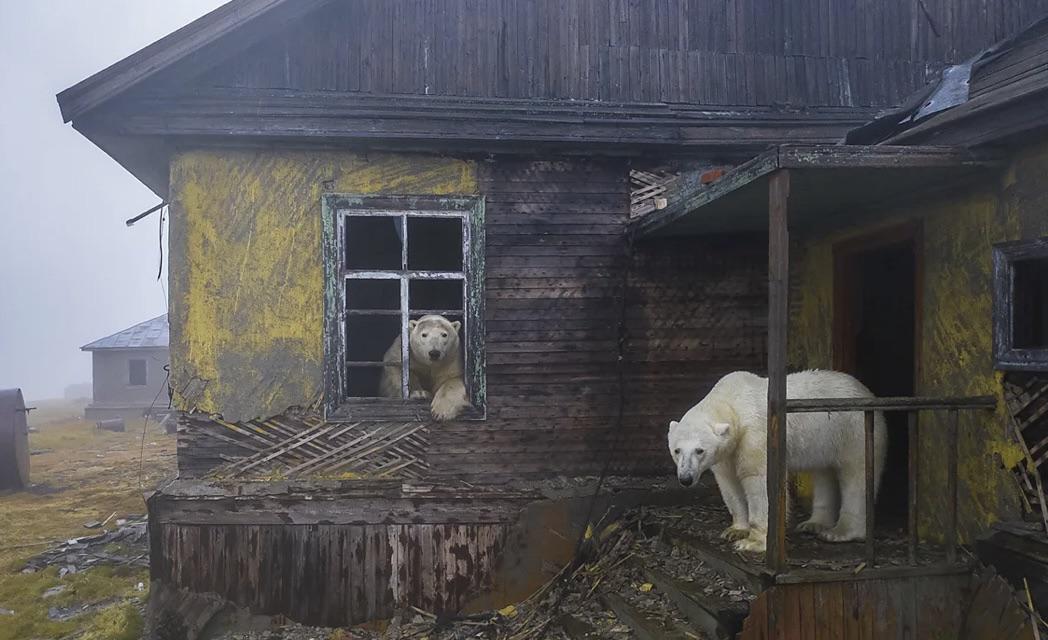Every year, as St. Patrick’s Day approaches, the city of Chicago performs a remarkable transformation that has become world-famous. The Chicago River, which flows through the heart of downtown, temporarily changes from its natural color to a vibrant emerald green. This spectacular tradition, dating back over 60 years, has become synonymous with Chicago’s St. Patrick’s Day celebrations and draws thousands of spectators annually.
The dyeing of the Chicago River began in 1962, but its roots go back even further. The story begins with Stephen Bailey, a member of the Chicago Journeymen Plumbers Local Union and the St. Patrick’s Day Parade chairman. Bailey noticed that plumbers used a fluorescent dye to detect leaks in buildings that would stain workers’ clothes green. This sparked the idea: if the dye could turn clothes green, why not the river?
With permission from the city, the first official river dyeing took place, creating an instant sensation. What started as a creative experiment quickly became a beloved tradition that continues to this day.
The exact formula for the dye remains a closely guarded secret, maintained by the Butler and Rowan families who have been responsible for the dyeing operation for generations. What is known is that the powder is eco-friendly and vegetable-based, designed to be environmentally safe while creating the perfect shade of Irish green.
Interestingly, the powder itself is orange before it hits the water. The chemical reaction with the water transforms it into the famous bright green color that has become so iconic. Over the years, the formula has been refined to be more environmentally friendly while maintaining that perfect emerald hue.
The river dyeing typically takes place on the Saturday before St. Patrick’s Day, usually early in the morning. The process begins with several boats navigating the river between Columbus Drive and State Street. Two smaller boats carry crew members who dispense the powdered dye, while a larger boat follows to mix and disperse the dye throughout the water.
Team members, often dressed in white coveralls that quickly become splattered with green, use flour sifters to shake the orange powder onto the water’s surface. As the powder hits the water, the chemical reaction occurs, and the river begins its transformation. The larger boat then moves through the colored sections, helping to spread the dye evenly.
The entire process takes about 45 minutes, but the preparation begins much earlier. The Chicago Journeymen Plumbers Union, which maintains control of the event, starts planning months in advance to ensure everything runs smoothly on the big day.
While the visual impact is dramatic, the environmental impact is minimal. The dye is designed to last only about 24 to 48 hours, depending on weather conditions and water flow. Windy days can shorten the display, while calmer conditions may extend it.
The amount of dye used has decreased over the years as the formula has improved. Today, approximately 40 pounds of dye are used to color the river—a significant reduction from the 100 pounds used in the early years.
The green river has become more than just a St. Patrick’s Day tradition—it’s a cultural touchstone for Chicago and a major tourist attraction. Thousands of spectators line the riverbanks and bridges to witness the transformation, with many arriving before dawn to secure prime viewing spots.
The dyeing ceremony kicks off a day of celebrations that includes the downtown parade and festivities throughout the city. Hotels along the river advertise special “green river view” rooms, and restaurants and bars create themed menus and cocktails to celebrate the occasion.
